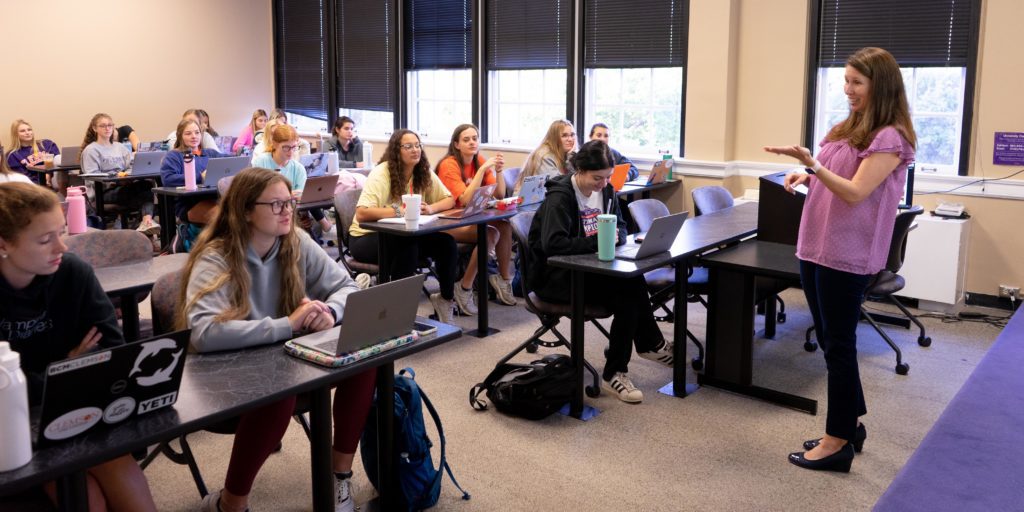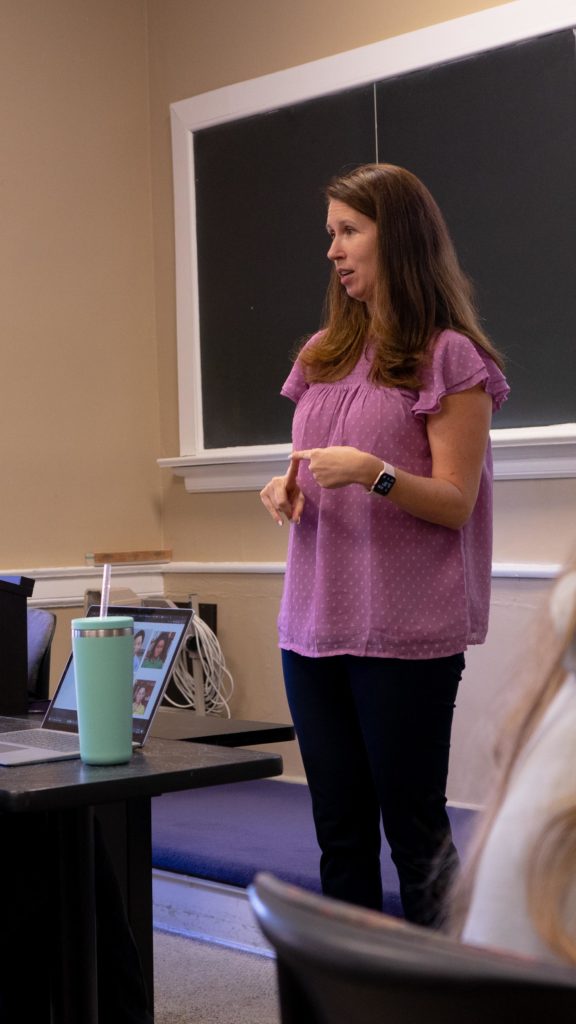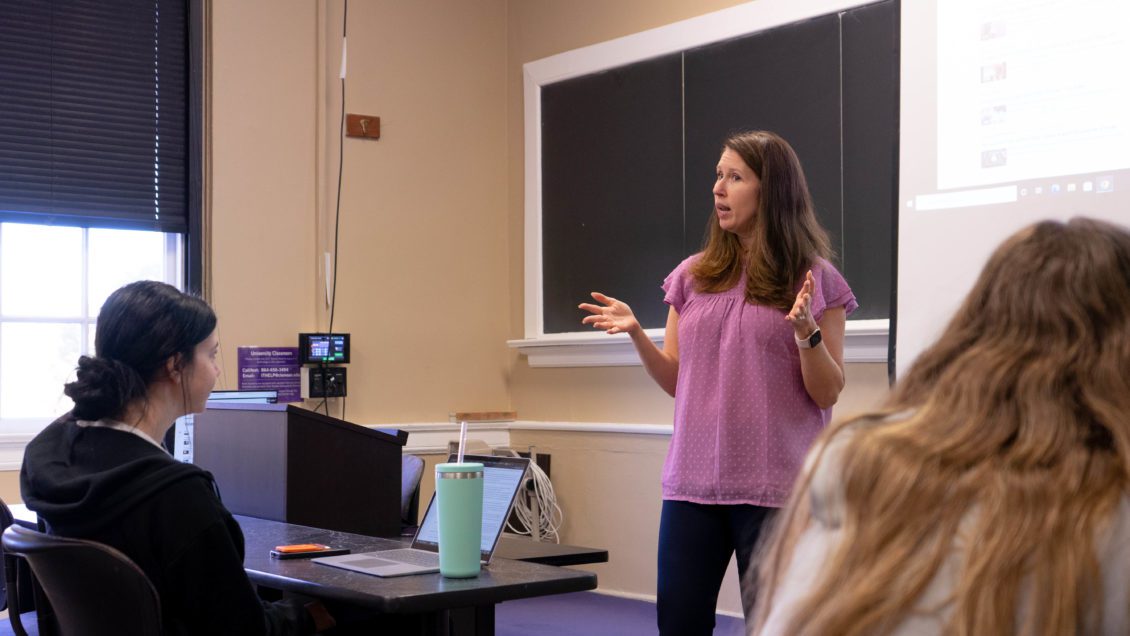Catherine Griffith serves as a clinical associate professor of special education in the Department of Education and Human Development. She coordinates the Master of Education program in Special Education with emphases in academic and behavioral interventions and teaches coursework on individuals with learning disabilities and emotional and behavioral disorders, intensive academic interventions and applied behavior analysis.
Griffith doesn’t only teach, she studies the best way in which to do it: her central research interests include providing effective instruction and supervision to preservice teachers and educating in-service teachers on evidence-based academic and function-based behavior interventions for school-aged individuals with disabilities.
We caught up with Griffith to explore her teaching philosophy, her approach to instruction and how she uses new, virtual tools to bring the classroom experience to her students in the form of virtual avatars.
What is your teaching philosophy?
My teaching philosophy focuses on two central goals. I strive to make a personal connection with each student to assist them in their growth as a future teacher. I also model effective instruction through providing evidence-based teaching practices for pre-service teachers to use with individuals with disabilities.
Why do you love teaching?
I enjoy the energy, excitement and passion that our undergraduate and graduate students in special education have. They are motivated to enhance the lives of individuals with disabilities and the reasons they give for deciding to pursue their career are inspiring. This makes teaching these students rewarding because I know they will make a difference in their future students’ and families’ lives.

When did you know that the field of education was for you?
As a young girl, I spent many years teaching my dolls and stuffed animals in my “classroom.” I always wanted to use the red pen, but my stuffed animals and dolls performed very well. They were very well-behaved too.
Name an educator that inspired you to teach.
Dr. Kelly Lambert, professor of behavioral neuroscience at the University of Richmond, inspired me to teach at the university level. She was my undergraduate advisor and behavioral neuroscience lab mentor during my undergraduate studies at Randolph-Macon College.
She always connected the difficult neuroscience content in her courses to real life to make it relevant and interesting as it related to topics such as mental illnesses or maternal behavior. She involved undergraduate students in research that provided invaluable experiences. Most importantly, she demonstrated compassion when undergraduate students – myself included – made mistakes in the lab, such as tripping and dropping a whole tray of rodent brain slices.
Describe an effective approach you use in the classroom.
Dr. Shanna Hirsch, associate professor of special education at Clemson, invited faculty and doctoral students to begin using mixed-reality simulations in 2020. Even though the “backstage” for mixed-reality simulations involves a great deal of planning, it has been an important experience for our special education majors to have the chance to practice collecting data, sharing data in IEP meetings and teaching various skills. Thanks to Dr. Hirsch’s lead, our special education majors can practice skills in the low-risk simulation with avatars before a live classroom.

What tips do you have for students in the College of Education that are preparing to be educators?
I would tell them to serve as an advocate for students with disabilities in their school community and engage their students in learning through many opportunities to practice. I would also advise them to take advantage of as many opportunities to teach, plan and facilitate meetings as they can in their field experiences.
What do you like about the College of Education and/or Clemson University?
The best part of Clemson’s College of Education is the people and their collective positive energy. The faculty, staff and students are friendly, welcoming and excited to learn.
What do you enjoy doing when you are not teaching?
When I am not teaching, you will find me spending time with my husband, Kevin, and our four children, Landon (15), Avery Claire (13), Luke (10) and Henry (8). We are often transporting them between all their sporting events (swimming, cross country, and golf), playgrounds, apple orchards and trips to Disney World. I also love to run and eat chocolate!
Get in touch and we will connect you with the author or another expert.
Or email us at news@clemson.edu

